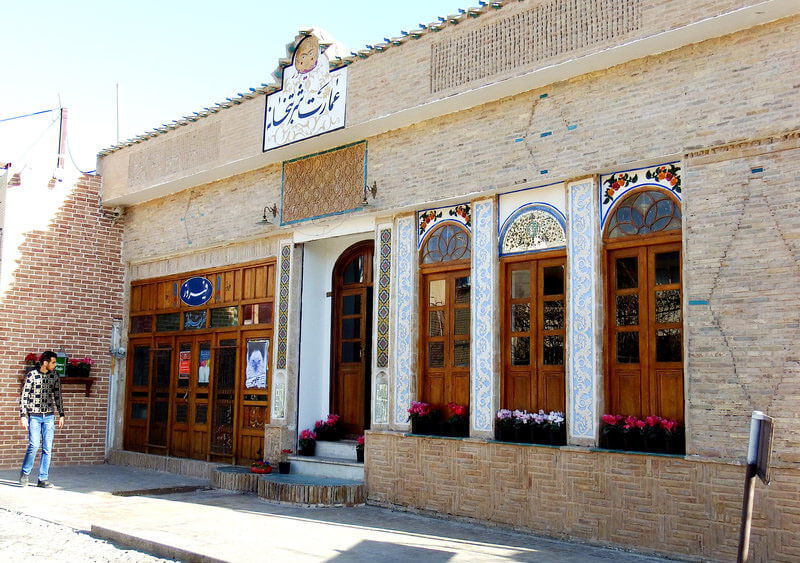If you would like to travel to one of the Western countries to travel, but do not have enough time or budget, just visit the Jolfa Street neighborhood in Isfahan province. Besides, Isfahan‘s Jolfa neighborhood has become one of the most famous and important neighborhoods in Isfahan with its very old but unspoilt and beautiful architecture and texture.
In addition, Jolfa Street of Isfahan is home to Christians of all tendencies, namely Protestants, Orthodox and Catholics. Besides, about 400 years ago, during the reign of Shah Abbas Safavi, Armenians of Isfahan migrated from the Aras River to Zayandehrud and settled there.

Jolfa Street – isfahan
Where is Jolfa neighborhood in Isfahan?
Jolfa Neighborhood is one of the best sights of Isfahan, located between Jolfa Hotel, Jolfa Square and Wanak Church. Also, it is one of the most densely populated neighborhoods in Isfahan. Furthermore, this neighborhood is home to Armenians in Isfahan.
Moreover, when we enter Isfahan, we have to cross hakim Nezami Street to face a small sign called Jolfa. Also, when you enter the neighborhood, you’ll immediately notice the dramatic difference. Besides, Jolfa Neighborhood offers you another world that is spectacular and attractive.
In addition, the cobblestone and clean streets, high-rise hours, churches, cafes and everything represent the dramatic difference between the areas. Also, it goes back as far as possible and become as opaque as the beauty of the neighborhood for a few moments.
Furthermore, there are many ponds and ponds in the neighborhood, all of which house a statue. Also, the statue of Hazrat Maryam, which is lingering a bowl of water-filled brass, shines beautifully among these sculptures. Besides, it’s interesting to know that on jolfa’s narrow street, cars rarely pass. So, if you see a car on this street, it’s going to be very quiet and with full care of the citizens.
History
Nearly 400 years ago, on the orders of Shah Abbas Safavi, the people of a city abandoned their homes and entered the city of Jolfa, which currently located on Azerbaijani soil. Also, the people of this city, all Armenians, spent a difficult autumn and winter on the way. Besides, but the coming of spring they made their way to Isfahan and Chahar Mahal and Bakhtiari provinces.
In addition, about 3,000 families from this group entered the city of Isfahan and the king gave them lands on the edge of Zayandeh Rud to prove his goodwill. Also, these lands have now become a very beautiful town with unparalleled architecture. Besides, its name choose according to the original Armenian mamen, Jolfa No.
Moreover, over time, other Armenians came to the neighborhood and the houses built in their manner. Also, after building houses, it was time to build churches so that the neighborhood would get quite a Christian color and smell. Besides, the Jolfa neighborhood of Isfahan has a long street stretching from west to east.
Furthermore, Khwaja Sarafrazian’s well-known family live at the western top of the neighborhood. Also, the famous Ymanian family at the eastern top. So, that the name of the western gate of Sarafrazian and the eastern gate of the Ymanian will place on the tongues.
Architecture and Buildings of Jolfa Street in Isfahan
The first thing the people of Old Jolfa did after moving to Isfahan was to build a house. Also, the building materials, which mainly used to build houses in the old Jolfa. Besides, they were different designs and colors due to the mountainousness of Isfahan.
In addition, today, most of the remaining texture of the new Jolfa and its architectures seen in the sangtarash neighborhood. Furthermore, the interesting thing about the Jolfa neighborhood is the juxnity of different religions together. So, the existence of churches, deer, fire temples and mosques together proves this very well.
Landmarks of Jolfa Neighborhood
Since religion is very important to Armenians, churches the first buildings built after houses in isfahan’s Jolfa neighborhood. Also, there are 11 historical and old churches in The Jolfa neighborhood of Isfahan. Besides, the first and most important of which is the Vankk Church, after which the churches of Bethlehem and Sarkis built.
Moreover, unlike the churches seen in Europe, the design of the Churches of Jolfa in Isfahan is very traditional. Also, the materials used in it are clay and soil so that they can establish their existence in Isfahan province. Besides, the dome of the Churches of Jolfa is very similar to the mosques of Isfahan and many paintings have painted on their interior walls. Furthermore, the bells sound every day at a certain time. So, for a few moments it will surround the whole neighborhood in silence, which will create a different mood for you.
Vank Cathedral
Vank Cathedral considered as one of the main and most important churches in Jolfa. Also, known as the Armenian Cathedral of Isfahan, of course Armenians living in Isfahan named it Amena Perkich, meaning the Church of the Holy Savior. Besides, the church has an area of about 8,731 square meters, of which 3,857 square meters built and the rest are green spaces.
In addition, Vank is one of the historical churches of Isfahan province, built during the time of Shah Abbas II. Also, it based on the architecture of St. Stepanus Church in Jolfa, Azerbaijan. Besides, the church has a huge dome and high walls. Furthermore, arches, as well as paintings and gilded ceilings of the monument are astounding and famous, to the point that it dazzles the eyes of all.
Beitollahm Church
The Beitollahm Church was from the Safavid era and founded in 1628 CE. Also, the church located near Isfahan’s Jolfa Square and two churches of Hakup and The Virgin Mary. Besides, the relatively large church built by Khawaja Peter Valijanian, a well-known Safavid businessman. Furthermore, now he and some of his family members relaxed in the church’s courtyard.
Maryam and Hakup Church
Maryam and Hakop Church complex located in the New Jolfa neighborhood of Isfahan. Besides, Hakup or Jacob the Holy See is the name of the first and oldest church in isfahan’s Jolfa neighborhood. Also, it founded in 1607, meaning that Armenians founded the church upon arrival in Isfahan. Furthermore, its size was small and could not meet the needs of all Armenians living. So, in 1613, they built the Church of the Virgin Mary around the church, which now located inside the Church of the Holy Mary.
Serkis Church
The Church of Serkis was from the Safavid era and built in 1659 CE. Also, the name of the Church of Serkis was originally the Holy Amenaperkic. Besides, in 1850, when it destroyed and its belongings transferred to Serkis and its name changed.
In addition, it is interesting to know that the church has two domes, each with eight spotlights. Also, beautiful paintings depicted in different parts of the church. Moreover, they destroyed due to many restorations, and now only paintings on the dome remain. So, it registered on the National Monuments List of Iran on March 8, 2003.
